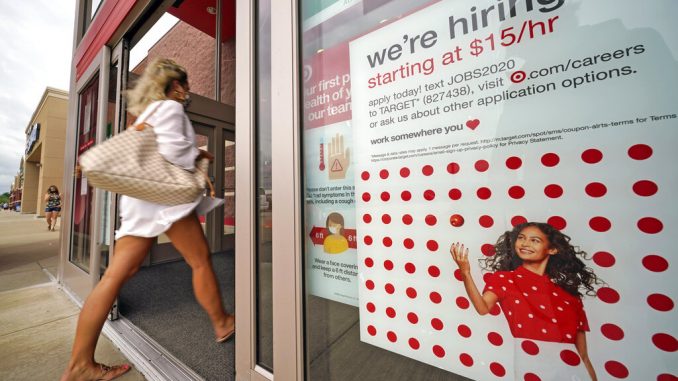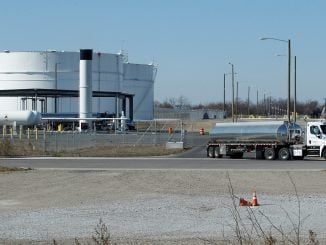
WASHINGTON, D.C. — The U.S. unemployment rate fell sharply in August to 8.4% from 10.2. Employers added 1.4 million jobs, the Labor Department said, and the U.S. economy has recovered about half the 22 million jobs lost to the pandemic.
Friday’s report added to evidence that nearly six months after the coronavirus paralyzed the country, the economy is mounting a recovery.
After an epic collapse in the spring, when the economy shrank at a roughly 30% annual rate, growth has been rebounding as states have reopened at least parts of their economies. Yet the recovery remains far from complete.
Some economists think significant hiring may be hard to sustain because employers are operating under a cloud of uncertainty about the virus. Daily confirmed case counts have fallen from 70,000 in June to about 40,000. The decline has leveled off in the past week and the viral caseload remains higher than it was in May and June.
As a result, activities like restaurant dining and air travel are still far below pre-pandemic levels. Most economists say a meaningful economic recovery will likely be impossible until the coronavirus is brought under control, most likely from the widespread use of a vaccine.
Friday’s jobs data was the second-to-last employment report — for most voters, the most visible barometer of the economy — before Election Day, Nov. 3. Voters in surveys have generally given him higher marks on the economy than they have on other aspects of his presidency.
A Federal Reserve report this week based on anecdotal reports from businesses found “rising instances of furloughed workers being laid off permanently as demand remained soft.”
According to CNBC, economists surveyed by Dow Jones had been expecting growth of 1.32 million and the jobless rate to decline to 9.8% from 10.2% in July.
“These jobs numbers reflect a big win for American workers, and are a welcome surprise considering the unemployment insurance claims have barely been budging in recent weeks. Unemployment breaking the 10% barrier so decisively is a big psychological lift as well,” said Robert Frick, corporate economist at Navy Federal Credit Union.
Roughly 29 million Americans are receiving state unemployment aid, although their total benefits, on average, have shrunk by more than half since the expiration of a $600-a-week federal supplement more than a month ago. The Trump administration has set up a program that will provide some of the unemployed with $300 a week.
What’s more, the economy appears to be operating on two tracks, resulting in an uneven and unequal recovery. Manufacturers are enjoying a solid rebound in demand for cars, appliances and electronics, with factory orders nearly back to pre-pandemic levels.
Home sales are also booming. So are home prices. Sales of existing homes surged by the most on record in July and are now nearly 9% higher than a year ago.
In addition, wealthier and well-educated workers have been far less likely to lose jobs to the pandemic than lower-income and minority workers have, in part because of a greater ability to work from home.
The coronavirus has also reshaped much of the consumption of affluent households: While spending less on restaurants and at shops and movie theaters, they are buying new homes to gain more space or renovating their houses to serve as workplaces as well as homes.

